I'm currently using Jsoup to try and get the videoID of the Youtube videos after I perform a search. I'm trying the get the videoID from the href and to do that I am using the following code:
val doc = Jsoup.connect("https://www.youtube.com/results")
.data("search_query", s).get()
for (a in doc.select("a[href]")) {
Log.d("MAIN", a.attr("abs:href"))
}
But currently, the result looks as so:

So I thought youtube was giving me a basic response because I didn't have the user agent. So I did that.
I tried adding the following based on this previous StackOverflow question
.ignoreContentType(true)
.userAgent("Mozilla/5.0 (Windows NT 6.1; Win64; x64; rv:25.0) Gecko/20100101 Firefox/25.0")
.referrer("http://www.google.com")
.timeout(12000)
.followRedirects(true)
.execute().parse()
It still gives me the basic response. I wanted to compare the results of Log.d("MAIN", doc.toString()) but there was only a slight difference in the meta tag and the nonce. And for some reason, I wasn't getting the full string version of the doc so I could not make further comparisons.
How can I get the youtube links after they were searched? (I want to get a link where it has "watch?v=XXXXXXX") If possible I would like solutions in kotlin language.